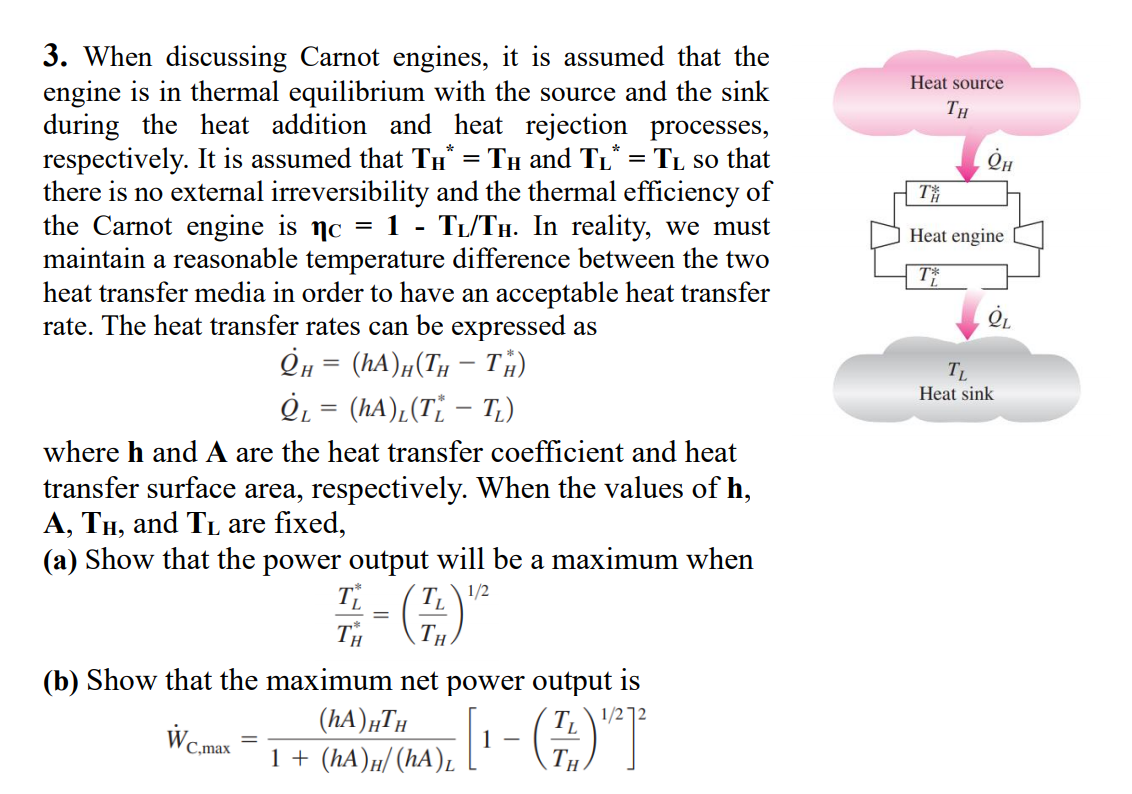Answered step by step
Verified Expert Solution
Question
1 Approved Answer
3. When discussing Carnot engines, it is assumed that the engine is in thermal equilibrium with the source and the sink during the heat

3. When discussing Carnot engines, it is assumed that the engine is in thermal equilibrium with the source and the sink during the heat addition and heat rejection processes, respectively. It is assumed that T* = T and T* = TL so that there is no external irreversibility and the thermal efficiency of the Carnot engine is c 1 - TL/T. In reality, we must maintain a reasonable temperature difference between the two heat transfer media in order to have an acceptable heat transfer rate. The heat transfer rates can be expressed as = Q= (h)H(TH-T) H Q = (h)(T ) where h and A are the heat transfer coefficient and heat transfer surface area, respectively. When the values of h, A, TH, and TL are fixed, (a) Show that the power output will be a maximum when Ti 1/2 71 = (7) " (b) Show that the maximum net power output is WC.max (h) HTH 1 + (hA) H/ (hA) L [ 1 - (+41) '] Heat source T TH Heat engine T* TL Heat sink
Step by Step Solution
There are 3 Steps involved in it
Step: 1

Get Instant Access to Expert-Tailored Solutions
See step-by-step solutions with expert insights and AI powered tools for academic success
Step: 2

Step: 3

Ace Your Homework with AI
Get the answers you need in no time with our AI-driven, step-by-step assistance
Get Started


